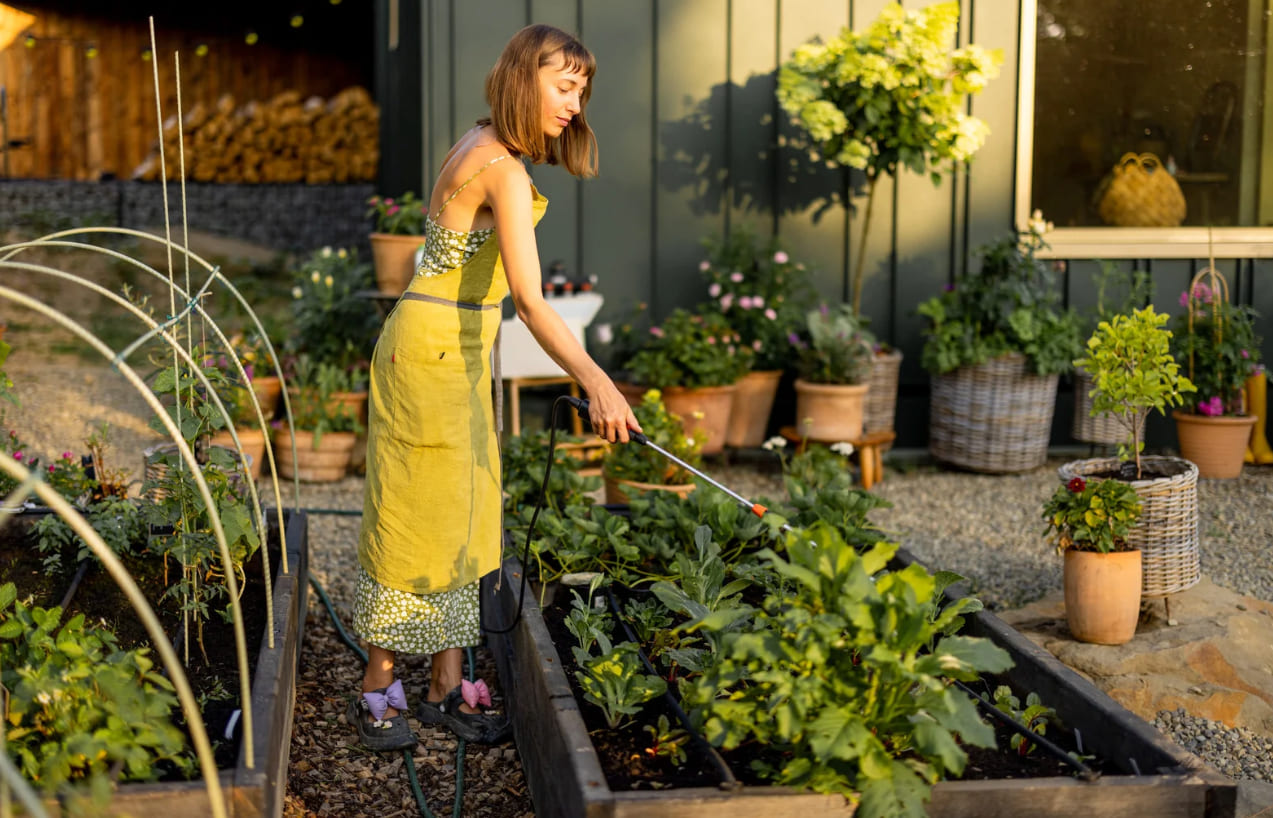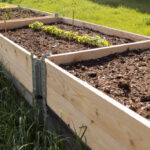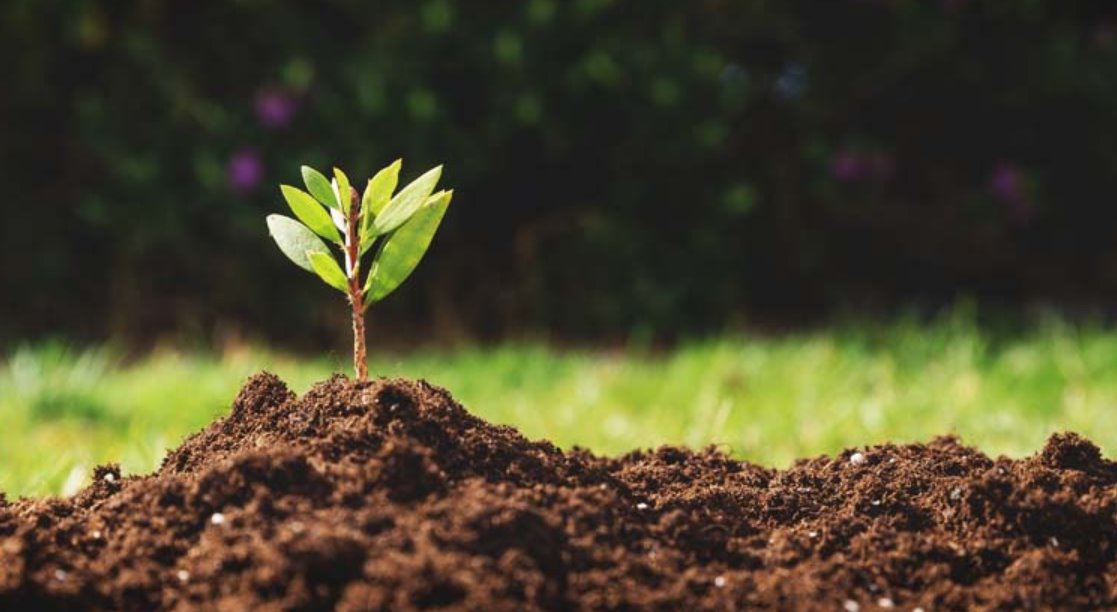
When planning a garden, one of the most important factors is the depth of your raised garden bed. The depth influences everything from root development to soil drainage and ease of maintenance. If you’re unsure how deep to make your raised garden bed, this guide will help you make the right decision based on the plants you want to grow.
Table of Contents
Understanding the Basics of Raised Garden Beds
Raised garden beds have become a go-to option for gardeners because they offer a variety of benefits. These elevated beds provide better control over soil conditions, prevent soil compaction, and enhance drainage. Raised beds are especially useful for those with poor or clay-heavy soil, as they allow for better root growth and healthier plants.
Key Benefits:
- Maximized Growing Space: Raised beds create a contained space for growing plants, which helps maximize limited garden space.
- Improved Drainage: With proper soil, raised beds allow excess water to drain away, reducing the risk of root rot and waterlogging.
- Ease of Maintenance: Raised beds make gardening easier by reducing the need to bend over, making it ideal for people with mobility issues.
Why Depth Matters
The depth of your raised garden bed plays a crucial role in plant health. The deeper the bed, the more space your plants will have for their roots to spread, which leads to stronger, healthier growth. Inadequate depth can restrict root expansion, reduce nutrient uptake, and hinder plant growth.
How Depth Affects Plants:
- Root Development: Plants need adequate space to grow their root systems. If the bed is too shallow, roots may become cramped, limiting plant growth.
- Soil Health: Deeper beds allow for more soil, which means more nutrients and organic matter can be included. This results in better soil structure and healthier plants.
- Moisture Retention: Deeper beds tend to retain moisture longer, helping plants survive during dry spells.
Ideal Raised Bed Depth Based on Plant Types
Different plants have different root requirements, and understanding these needs is key to selecting the appropriate bed depth. Here’s a breakdown of ideal raised bed depths based on the types of plants you’re planning to grow.
Shallow-rooted Plants (6 inches)
Shallow-rooted plants are ideal for raised beds that are about 6 inches deep. These plants don’t require a lot of root space, making them perfect for small, compact beds.
Examples:
- Herbs like basil, parsley, and cilantro
- Lettuce and other leafy greens
- Radishes and small root vegetables
Medium-rooted Plants (12 inches)
If you want to grow plants with slightly deeper roots, such as root vegetables and certain herbs, a 12-inch deep bed is a standard choice.
Examples:
- Carrots
- Peppers
- Radishes
- Small potatoes
Deep-rooted Plants (18 inches)
For plants that require more space to grow their roots, such as tomatoes and cucumbers, an 18-inch deep bed is ideal. This depth allows for better root expansion, ensuring strong plant growth and maximum productivity.
Examples:
- Tomatoes
- Cucumbers
- Squash
- Kale
Extra depth (24 inches)
While not necessary for most plants, 24-inch deep beds offer greater flexibility, especially if you want to grow larger, deep-rooted plants or if you want to reduce the need for frequent watering and maintenance.
Examples:
- Certain fruit trees (dwarf varieties)
- Large root vegetables
- Convenient for gardeners who prefer taller beds for ergonomic reasons
Benefits of Deeper Raised Beds
While most plants will thrive in beds with depths ranging from 6 to 18 inches, many gardeners choose deeper beds for a variety of reasons. The deeper the raised bed, the more benefits it can provide, especially for larger plants or those who want a more comfortable gardening experience.
Why Opt for Deeper Beds?
- Ease of Gardening: One of the biggest benefits of deeper raised beds is that they allow gardeners to work without bending over excessively. Taller beds, particularly those that are around 24 inches high, make it easier to tend to plants without straining your back and knees.
- Better Drainage: Deeper beds promote faster drainage. This is especially important in areas with heavy rainfall or during the winter months. Plants in deeper beds are less likely to sit in water, which can help prevent root rot.
- Flexibility for Larger Plants: Deeper beds allow for a wider variety of plants, including deep-rooted vegetables and even small fruit trees, which may not thrive in shallower beds.
Factors Affecting the Depth of Your Raised Bed
While plant type is the primary factor in choosing bed depth, there are other important considerations that can influence your decision. These include soil type, climate, location, and maintenance needs.
Factors to Consider:
- Soil Type: If your garden is in an area with poor or compacted soil, you may need a deeper bed to accommodate plant roots and ensure better soil health. Sandy soils drain faster and might require less depth, while clay-heavy soils will benefit from more space.
- Climate: In hot climates with high temperatures, deeper beds can help retain moisture for longer periods. On the other hand, in colder climates, deeper beds can help with insulation and protect roots from freezing.
- Location: The location of your raised bed can affect its depth. For example, if you’re placing it in an area with heavy foot traffic, you might want a deeper, more resilient bed to ensure its stability and longevity.
- Maintenance: A deeper raised bed can reduce the amount of weeding, as it allows you to control the soil more effectively. Additionally, it can help deter certain pests and provide a better environment for plant growth.
How to Build the Right Raised Bed Depth
Constructing the ideal raised garden bed involves more than just selecting the right depth—it’s also about building a stable and functional structure. Here’s a basic guide on how to build the right raised bed depth for your garden.
Step-by-Step Guide:
- Choose the Location: Select a spot that gets adequate sunlight and has good drainage. Avoid low-lying areas where water tends to pool.
- Select the Materials: You can use wood, stone, metal, or recycled materials. Make sure the material is durable and will withstand the elements.
- Determine the Dimensions: Decide on the width, length, and height of your raised bed. For ease of access, keep the width at around 4 feet so you can reach the middle without stepping into the bed.
- Build the Frame: Construct the frame according to your selected dimensions. If using wood, ensure that the planks are strong enough to hold the weight of the soil.
- Prepare the Base: Line the bottom of the bed with a weed barrier or hardware cloth to prevent pests from burrowing up into your plants. Then, fill the bed with high-quality, organic soil.
- Add Soil and Amendments: Fill the bed with nutrient-rich soil and any organic amendments, such as compost or manure, to provide the best growing environment for your plants.
Common Mistakes to Avoid
When constructing raised garden beds and determining their depth, there are several mistakes that gardeners often make. Avoiding these errors can help ensure the success of your garden and reduce frustration down the line.
Mistakes to Watch Out For:
- Choosing the Wrong Depth for Plants: It’s important to consider the root depth of the plants you intend to grow. Shallow-rooted plants won’t require as much depth, but deep-rooted vegetables like tomatoes and cucumbers need more room to thrive. Don’t make your bed too shallow if you’re growing deep-rooted plants.
- Ignoring Drainage: Proper drainage is crucial. While raised beds generally drain better than in-ground gardens, if the bed is too deep or packed too tightly with soil, it may not drain properly. Ensure that the soil is well-draining and that excess water can escape to prevent waterlogging.
- Using Low-Quality Materials: The materials you use for building your raised bed are crucial to its longevity and effectiveness. Avoid using treated wood that could leach chemicals into your soil. Also, steer clear of using plastic liners or other non-breathable materials at the bottom, as they can impede drainage and root growth.
- Overfilling the Bed: Overfilling with soil or using poor-quality filler materials can reduce the available space for plant roots. Ensure that the soil you add is nutrient-rich and appropriate for the plants you intend to grow.
Choosing the proper depth for your raised garden bed is essential for plant health and overall gardening success. By understanding the root needs of different plants, you can create a garden that flourishes and is easy to manage. Whether you’re growing shallow-rooted herbs or deep-rooted vegetables, the proper depth can make all the difference in ensuring your plants grow strong and healthy.
While depth is essential, it’s also crucial to consider factors like soil quality, location, and climate. Raised garden beds are an investment in both your garden’s success and your gardening comfort. With the right depth, your garden will thrive, and gardening will be a more enjoyable and rewarding experience.



